Chickadees, of which there are several species, are fairly common birds, but they are also beloved little birds, too.
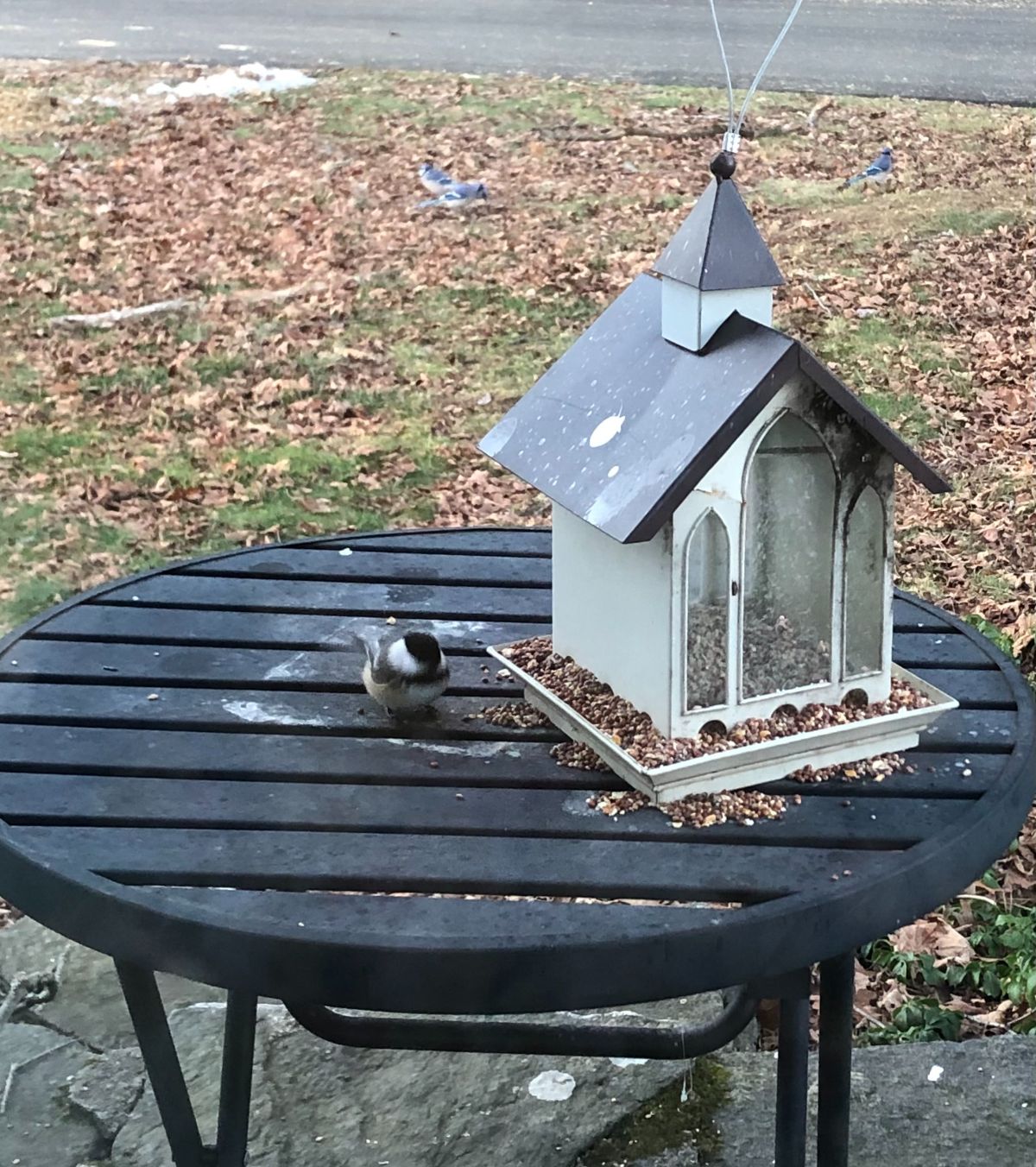
There is something about their spritely, curious disposition and their sweet-sounding chirps that make you want to have these favorite birds around all year.
As non-migratory birds, chickadees can use our help in the winter, too. Here, we have a comprehensive list of ways that you can attract—and help—chickadees live long through the winter and through other times of the year, too. (Because keeping chickadees around year-round is not only a big help to you, but it’s one of the best ways to have them there in the winter!)
Jump to:
Favorite Foods of Chickadees
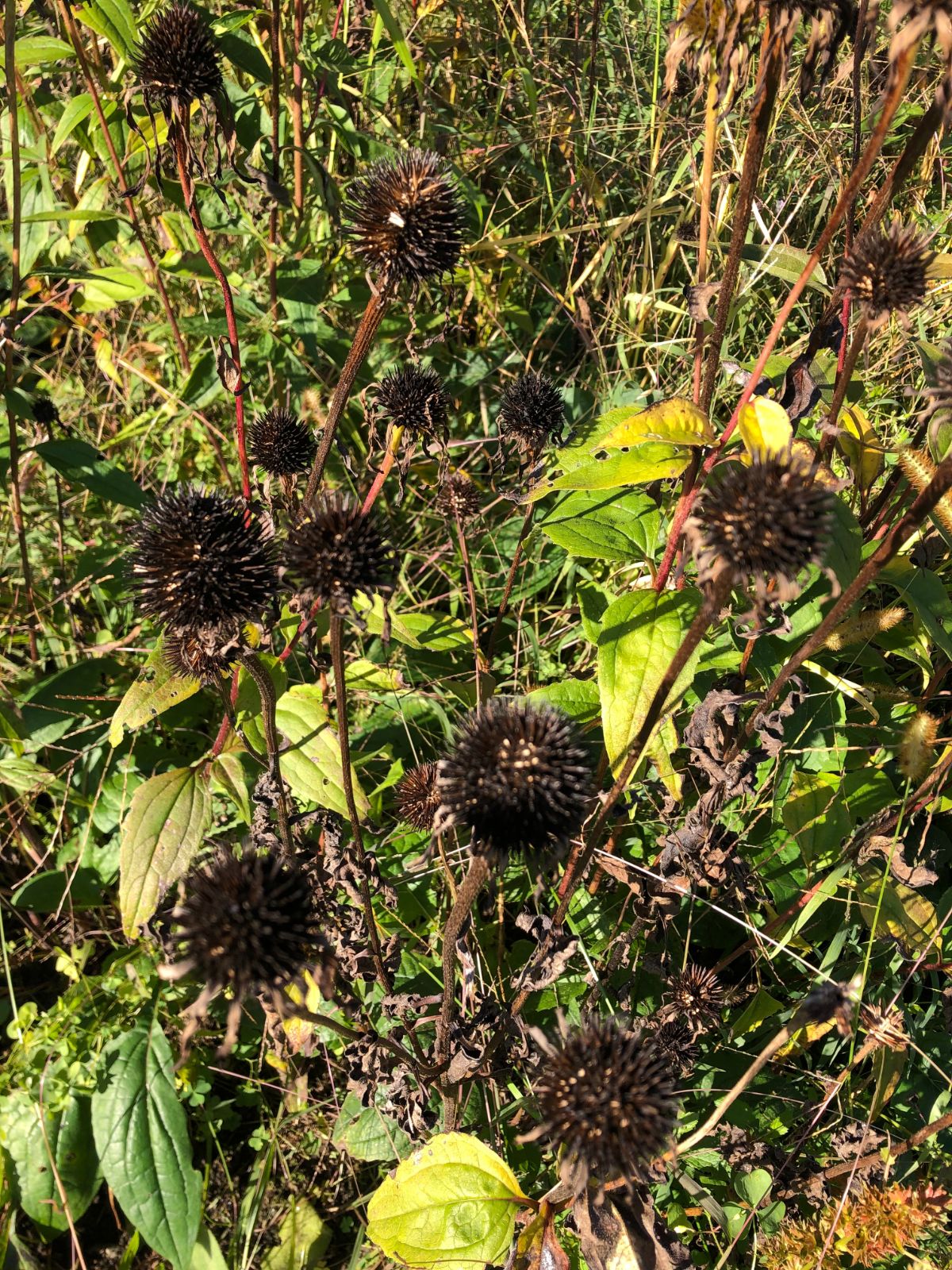
Chickadees like a large range of foods. They’re not particularly picky, but they do have some favorite foods.
The chickadee diet changes at different times of the year (in part due to what is available since they are not migratory and live out winters in colder, harsher regions).
In summer, chickadees eat mostly insects. They eat a lot of them, and they eat different kinds. This is good for gardeners because it means they can help you with your insect and pest control problems!
Considering this, that’s an even bigger reason to attract, feed, and support chickadees in your yard in the winter. They won’t need to leave if they have year-round food!
During the winter, the chickadee diet has to change. This is when they become primarily seed and berry eaters. Some of their favorites are:
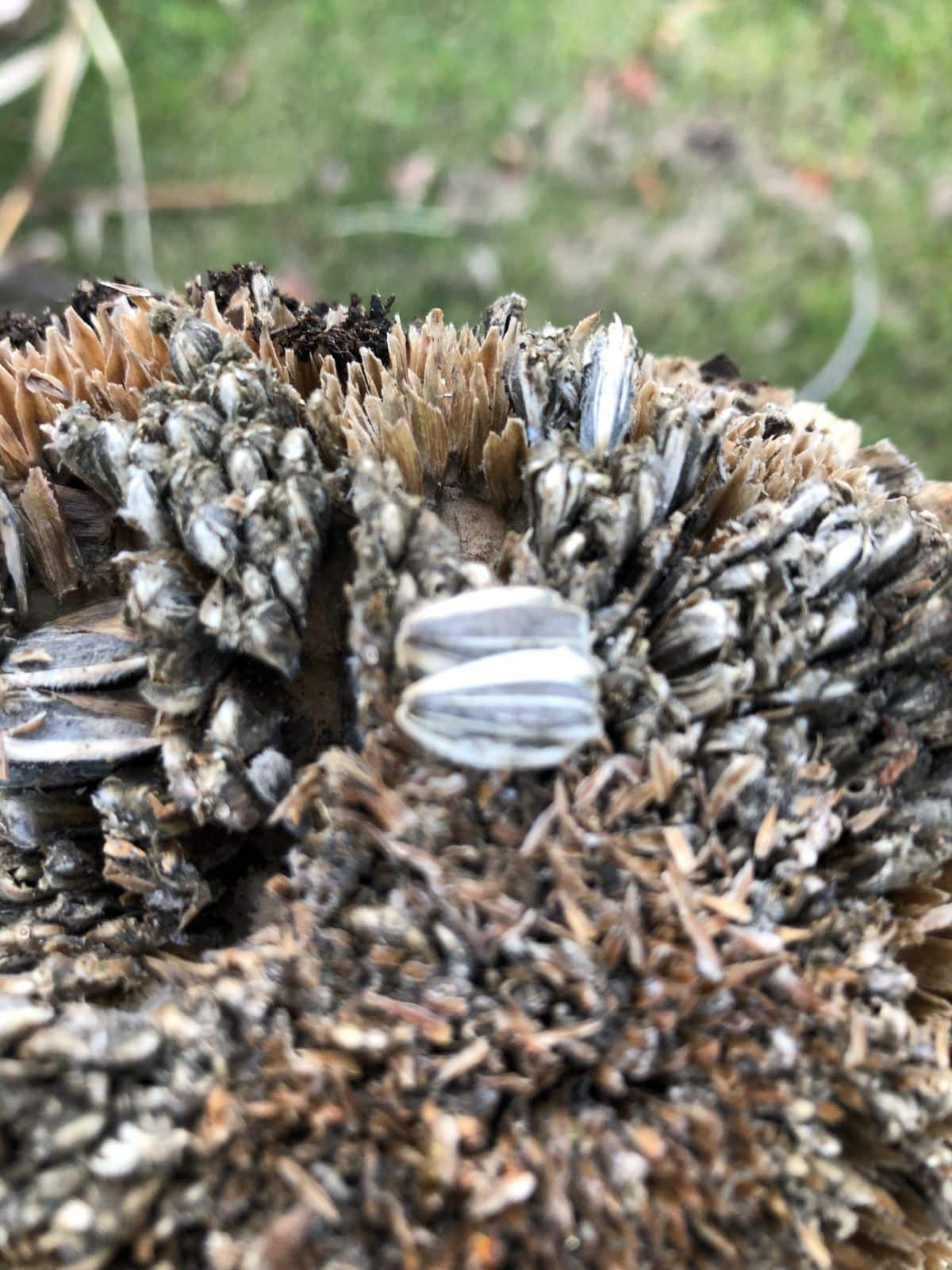
- Sunflower seeds – an irresistible chickadee favorite!
- Shelled peanuts
- Nyjer seed or thistle seed
- Safflower seeds
- Walnuts
- Pecans
Though they’re not seeds or berries, dried mealworms are good things to feed chickadees in winter, too. As mentioned, they’re omnivores, and when they can get them, they’ll eat them—and love them!
Suet is sweet!
Truth be told, we don’t know if suet is sweet, and since it’s fat, it probably isn’t. But chickadees love it, and it gives them an excellent source of fat and energy to help them through the cold winter months.
Suet comes in different “flavors” and varieties, often imbedded with different seed and berry mixes. You can surely find one labeled to attract chickadees, but in truth, they’re bound to come to any suet block. You can also just choose a suet with some of the seeds and berries listed above.
Grow More Berry Bushes
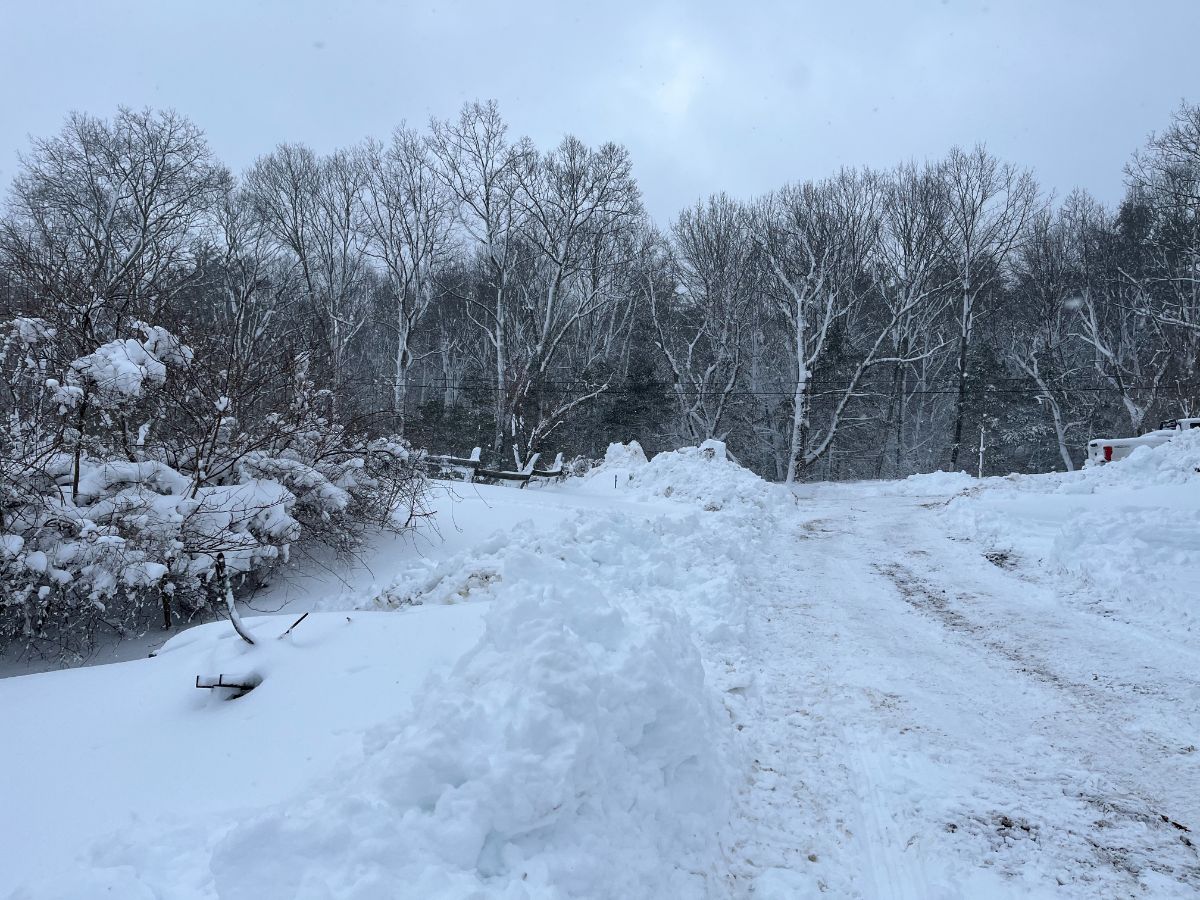
You can do a lot to attract chickadees by planting berry bushes that feed them. It is especially helpful if those bushes hold their berries over the winter.
Plant shrubs that bear and hold berries in winter that can be winter food sources, like:
- Sumac
- Holly
- Winterberry
- chokecherry
- Serviceberry
- Beautyberry
- Cranberry (and no, you don’t need a bog to grow cranberry bushes!)
- Aronia, aka chokeberry
- Bayberry
- Crabapples
- Elderberries
- Roses that grow hips (avoid hipless hybrids)
- Snowberry
- Juniper
Just be sure to avoid invasive species like Oriental Bittersweet!)
A place to rest and hide
Shrubs and evergreens also give chickadees places to rest and hide when they’re not eating, which makes your yard even more attractive to them. They like the security of thickets, too.
While you wait for plantings to mature enough to provide for these needs, you can leave a brush pile in your yard. It is a good alternative if you have no suitable evergreens or bushes big enough to protect them.
Hang More Small Feeders
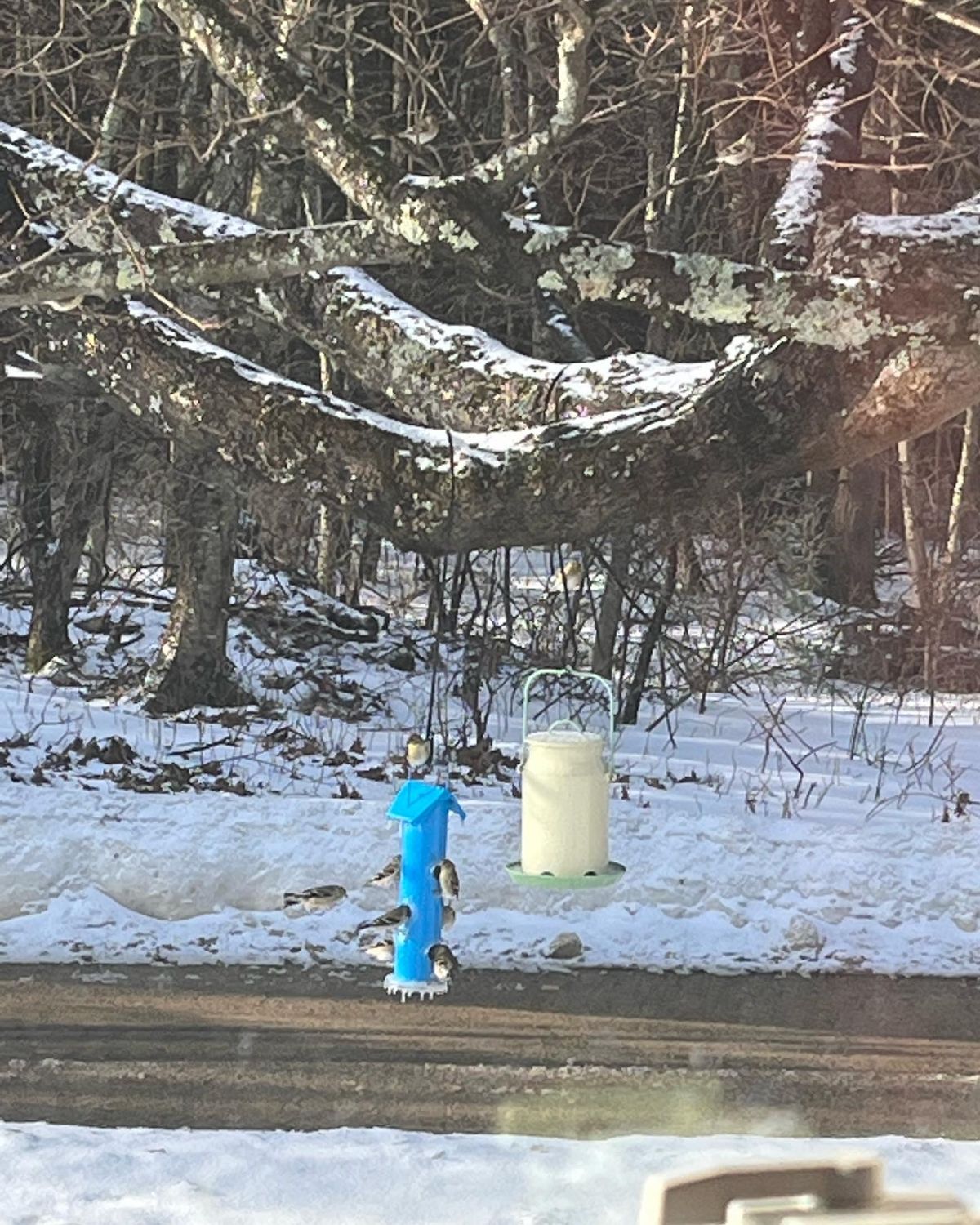
As small birds, chickadees can easily be bullied out of bird feeders. Where there are non-migratory chickadees, you are bound to have big bullies at your feeders, like blue jays and other types of jays, and even cardinals (which may not be as mean but will outcompete smaller birds like chickadees for food).
The solution is to hang more feeders, but also, and probably more importantly, to hang smaller feeders with small openings that are easy for small birds to access but that can be difficult for larger birds.
Let the big birds go to the big feeders and keep other options around for the little guys.
Thistle seed feeders are a good solution because not only do chickadees and other small birds love thistle (or nyjer) seed, but the feeders tend to be smaller, with smaller access ports and perches. This makes them ideal for chickadees but not for large birds and bullies.
There are a number of other options, too, including feeders wrapped with large square wire that allow small birds to sneak in while large birds cannot.
Feature Water
As with all things, chickadees need water, and they like nice, open water at all times of the year. Give them a nice bird bath, and they will come.
Heated waterers and bird baths that stay open in the winter are particularly attractive.
In the summer, adding shiny marbles to your bird bath can bring the little birds in. Chickadees are naturally very curious birds, so shiny objects are hard for them to resist.
Chickadees like to investigate noises, and the splash of a bird bath fountain or garden water feature will pique their interest.
Gazing balls and other garden features will work the same way.
Shiny tops or decorations on bird feeders will also make them come to investigate.
Tips to Keep More Chickadees in Your Yard
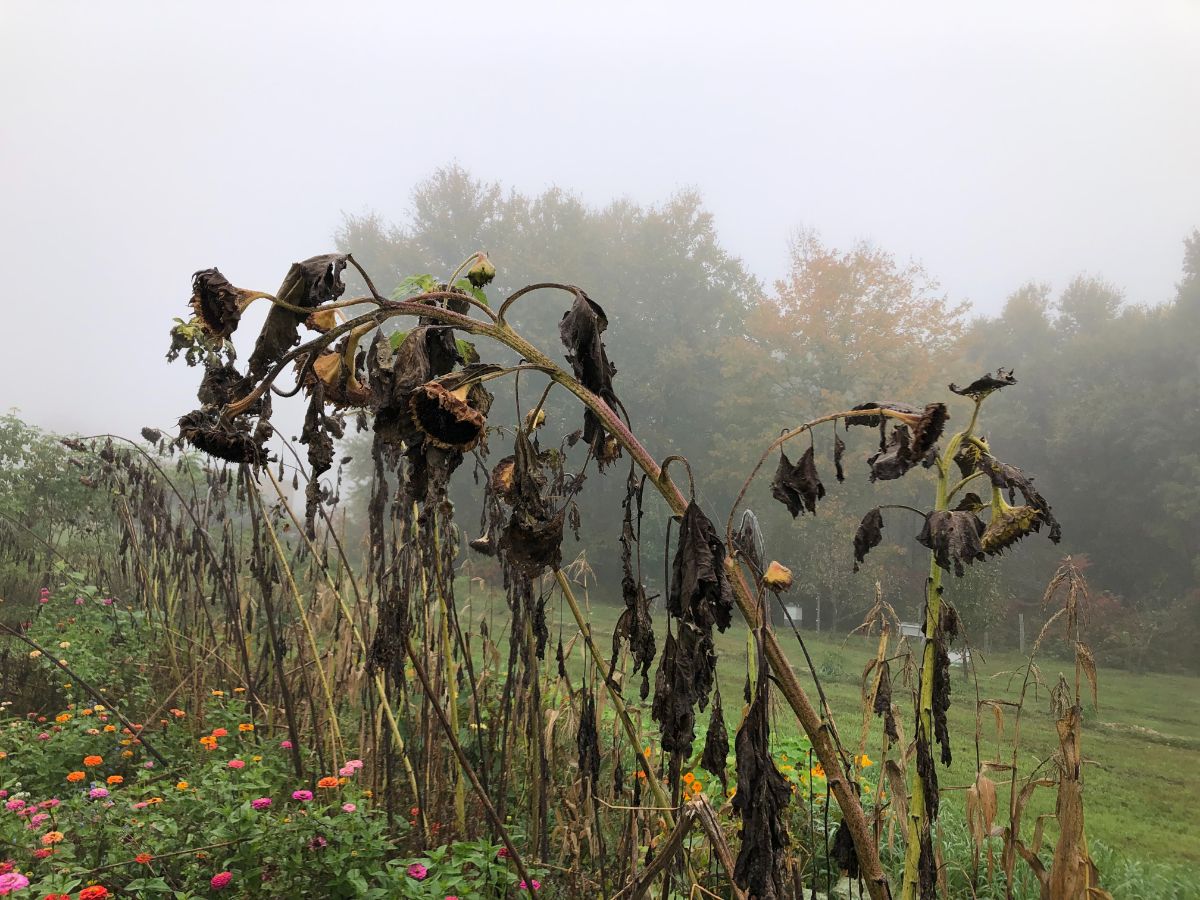
As mentioned, chickadees can do a lot of good in the garden. Besides that, they're just genuinely curious and playful birds with sweet calls that are fun and enjoyable to have around.
Throughout the year, there are some things you can do to encourage chickadees to make your home theirs.
- Plant plants that chickadees like with seeds they seek in winter
- Planting stands of sunflowers is a great draw for chickadees
- Don't cut the sunflowers down in the fall—leave them to stand and feed the birds naturally
- Let other garden flowers stand with their dried seed heads to feed chickadees and other birds in winter
- Leave the rose hips on your rose bushes
- Provide perches where chickadees can sit and watch for predators and where they can wait for turns at the feeder
- Post perches within sight of feeders, and don’t make them too large or comfortable for big bully birds
- Chickadees do like perches with small spaces where they can sit and crack a nut to eat
- Encourage nesting
- Do not use harmful sprays or chemicals in your garden. Chickadees are what they eat, too.
- Let chickadees and other insect-eating birds be your insect control instead
- Use organic products or a bug vacuum for insects when the population is too much for the birds to handle
- This keeps things natural and safe for your favorite feathered friends and gives them a food supply
- Make and hang seasonal decorations that double as food for the birds!
Nesting Sites Mean Year-Round Residents
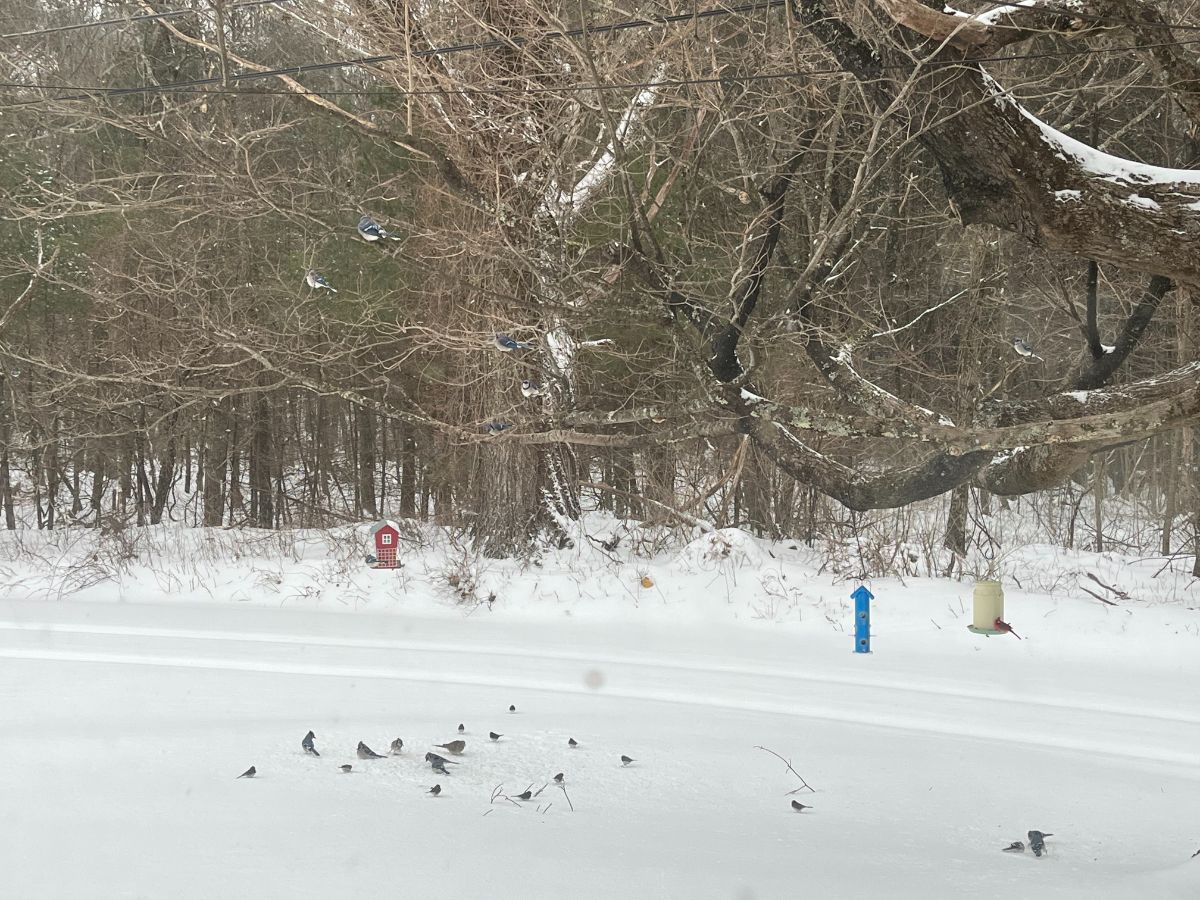
We’ve mentioned a few times that chickadees are very helpful as pest control in the garden. So, it’s a wise idea to not just invite them over in winter, but to try to keep them there the whole year round.
Chickadees don’t migrate far, but they do move according to their needs. That means that if they need food or shelter, they’ll go somewhere to seek it out.
You can encourage chickadees to live year-round on your property by providing them with spaces to build their nests. Chickadees live in cavities. They seek places like holes in trees and old woodpecker holes.
If you have old trees or trees with cavities in them in your yard (maybe a hardwood where an old branch broke off), leave them standing if it's safe to do so.
You can also try putting up birdhouses for chickadees. They like small to medium size houses with small holes. The “door” or opening should not be much larger than an inch in diameter (around 1 ⅛ inches is the right size for chickadee houses).
If you put favored nesting materials in the house, chickadees are more likely to use them. They like wood shavings and things like pet hair. Pet hair should not be treated with flea and tick insecticides, though, because these are toxic to small birds.
Happy, Healthy Chickadees Make Good Yard and Garden Friends
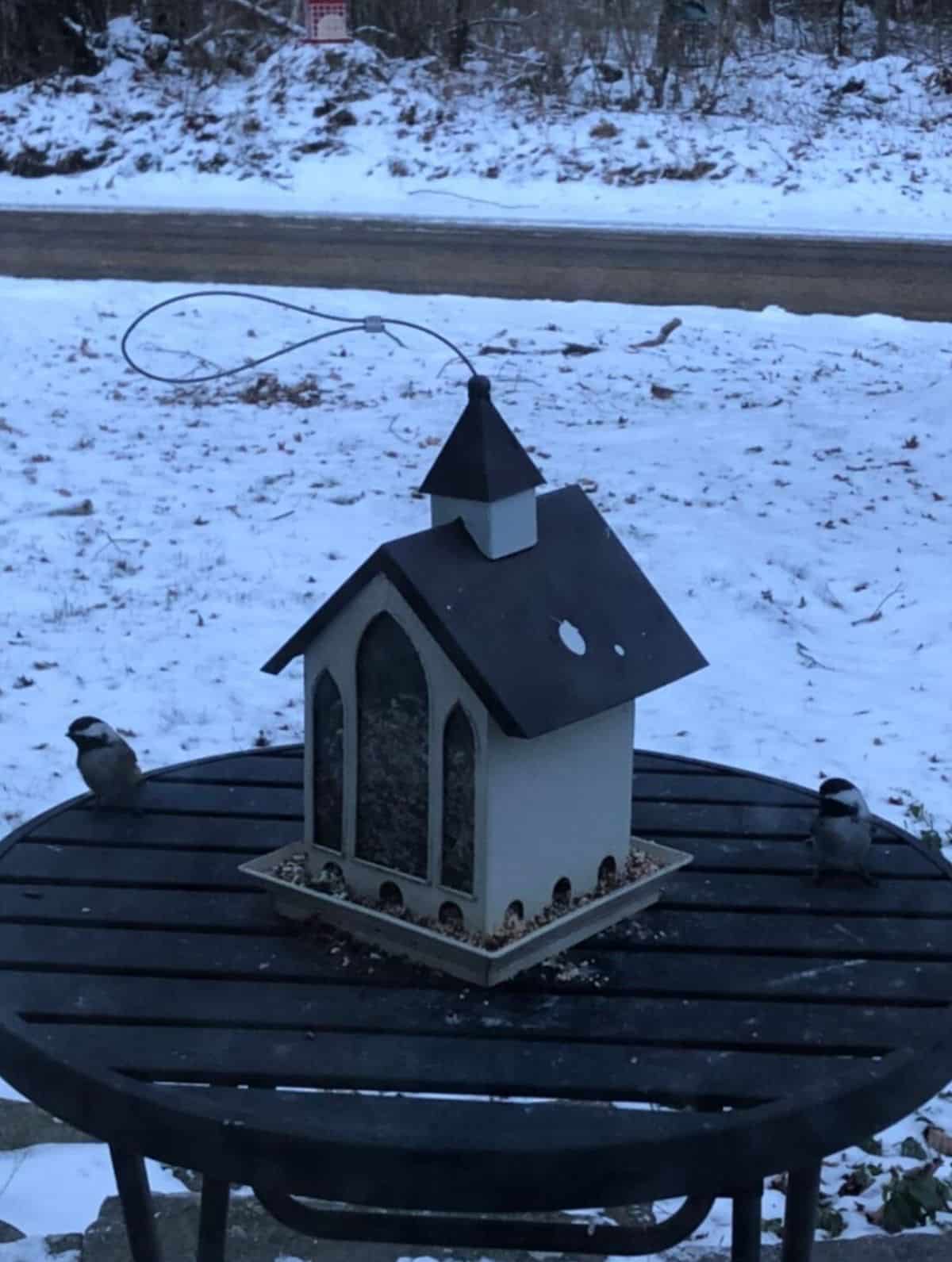
Chickadees are useful birds to have around, and they’re fun and friendly, too!
They’ll help you keep control in the garden and entertain you with their antics. They’re such curious, friendly birds that many people say they can literally feed them from the palm of their hands. (With a little time and patience, sit still in your yard offering up favorite nuts or seeds like peanuts, walnuts, or sunflower seeds, and there’s a good chance you’ll make a fast friend.)
Winter being the toughest time for these little feathered friends, it’s a smart – and mutually beneficial—idea to attract and support them through the winter and the rest of the year, too!

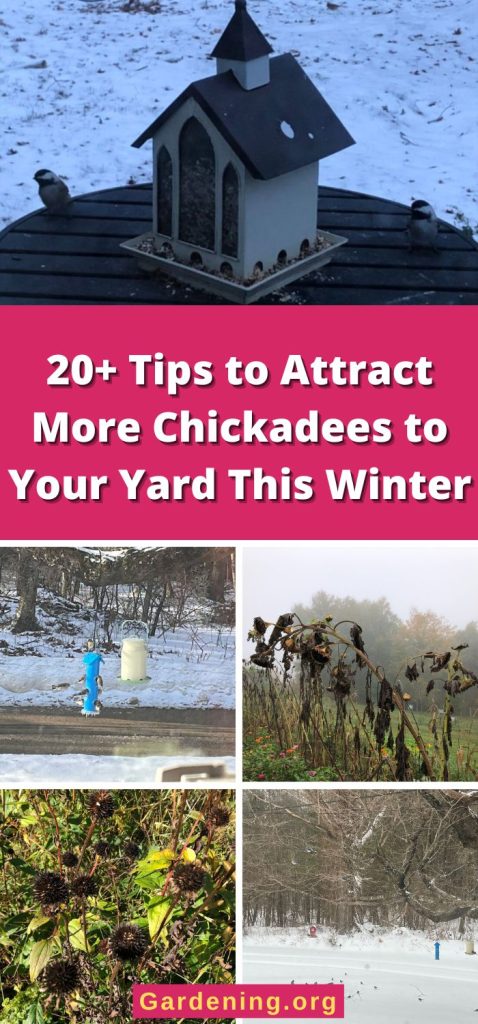
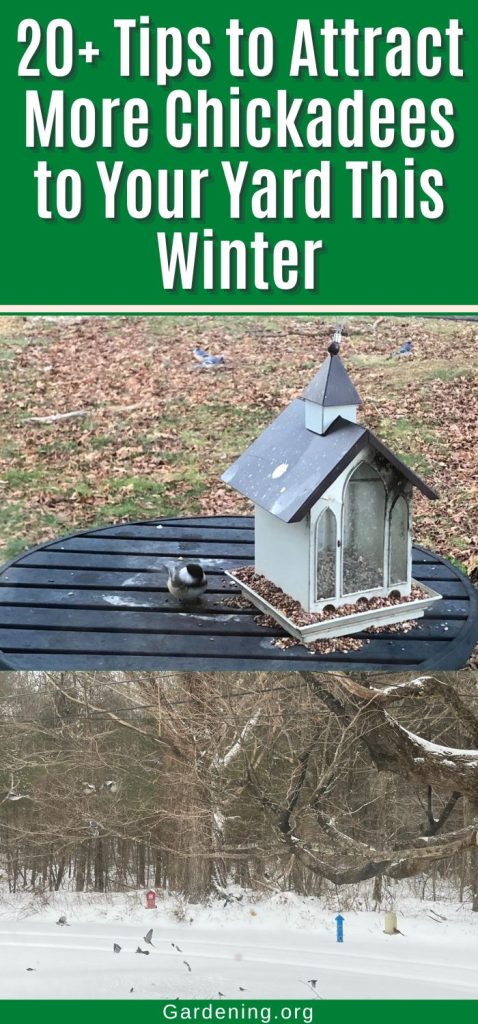
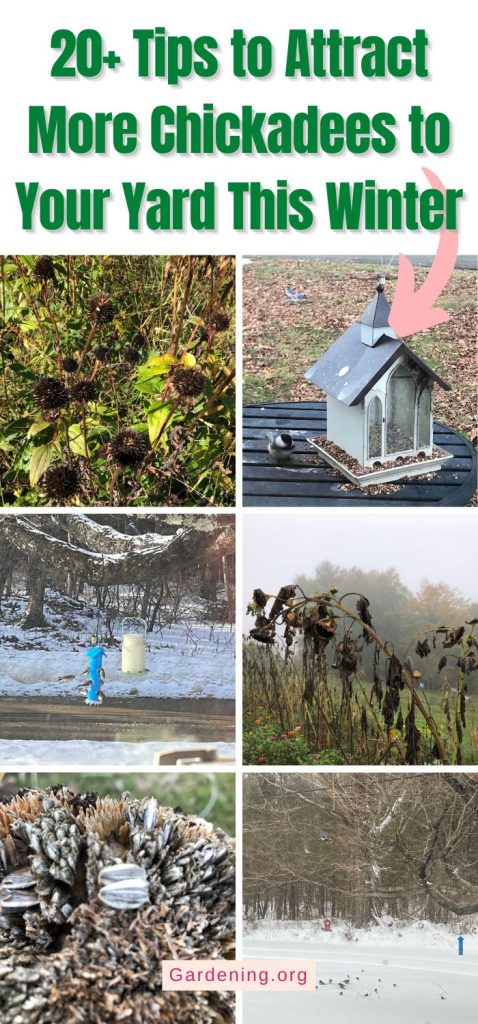
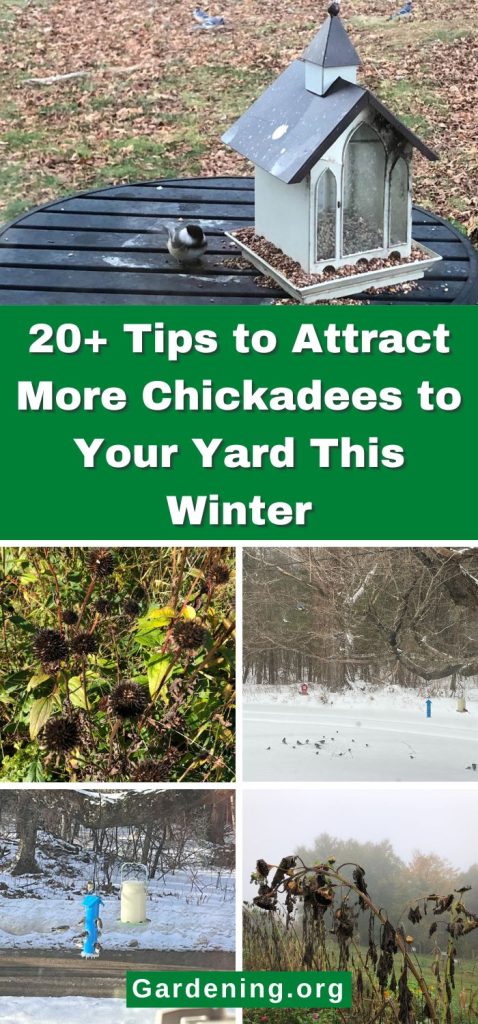




Maureen
Great article! Really enjoyed this & can’t wait to try some of these tips. Thank you